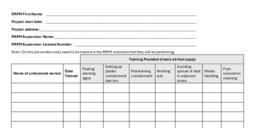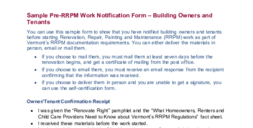
Lead is a toxic metal that was used in house paint until 1978. It is estimated that the majority of Vermont housing was built before 1978. Lead-based paint becomes a hazard when it is disturbed and turns into dust. If lead-based paint is not handled properly, lead dust can be breathed in or swallowed by workers, other people and children and cause lead poisoning. Learn more about the health effects of lead
Because lead is toxic, there are regulations that require workers to be trained and licensed to use lead-safe work practices when they disturb painted surfaces in pre-1978 buildings. Since 2010, the U.S. Environmental Protection Agency (EPA) has governed the Renovation, Repair and Painting (RRP) regulations.
As of October 1, 2022, Vermont has taken over the federal regulations, which are now called the Renovation, Repair, Painting and Maintenance (RRPM) regulations. The Health Department now oversees compliance with these regulations and licenses individuals and entities that perform renovation, repair, painting and maintenance work. For the most part, the new RRPM regulations are the same as the federal RRP regulations. However, there are some ways that the RRPM regulations are more restrictive.
See the Vermont Regulations for Lead Control for more details.
Find a Vermont Lead-Safe RRPM Firm






